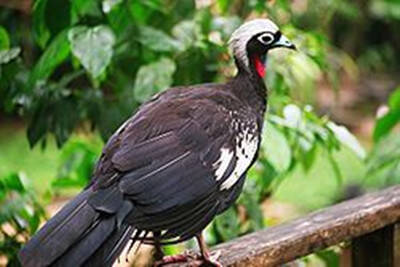Aburria pipile
IUCN
LCBasic Information
Scientific classification
- name:Aburria pipile
- Scientific Name:Aburria pipile
- Outline:Landfowl
- Family:Chickeniformes C.family C.Genus
Vital signs
- length:About 60 cm
- Weight:No textual research information is available
- lifetime:No textual research information is available
Feature
It is mostly black with a purple sheen and no facial feathers
Distribution and Habitat
The songbird is found only in Trinidad and Tobago and is close to extinction.
Songbirds live in forests and build their nests in trees.
Appearance
Common crested pheasants are mainly black with a purple sheen. Their crowns are large and black with white edges. There are large white patches on the wings. No facial feathers, blue underbelly, red feet.
They are large birds, 60 cm long, turkey-like in appearance, with young necks and thin heads.
Details
Aburria pipile, also known as the common pheasant, is a type of crested pheasant.

Songguan used to be a subspecies that included all songcrested pheasants. However, analysis of mitochondrial DNA, osteology and biogeography confirmed that these subspecies are in fact separate species, and it is suggested that the two genera should be merged. In addition, the blue-throated songcrested pheasant is the closest relative of the songbird, branching off about 400,000 years ago, or 1.6 million years earlier. Since Trinidad has only been an island since the Quaternary Ice Age, it is estimated that songbirds evolved on the South American mainland and were brought to Trinidad relatively recently. It is not believed that the complete specimen of the songbird was found in the Orinoco River near Cumana, Venezuela, but this location relative to Trinidad makes the claim likely correct, and the songbird probably disappeared from Venezuela around 1800.
Songguan birds lay three eggs at a time. The eggs are large and white, and only the female chickens are responsible for incubating them. They mainly eat fruit and strawberries. The songbird sounds like a whistle.
Songguan birds belong to a smaller group of crested pheasants and are listed as a critically endangered species.
Protect wild animals and eliminate wild meat.
Maintaining ecological balance is everyone's responsibility!








